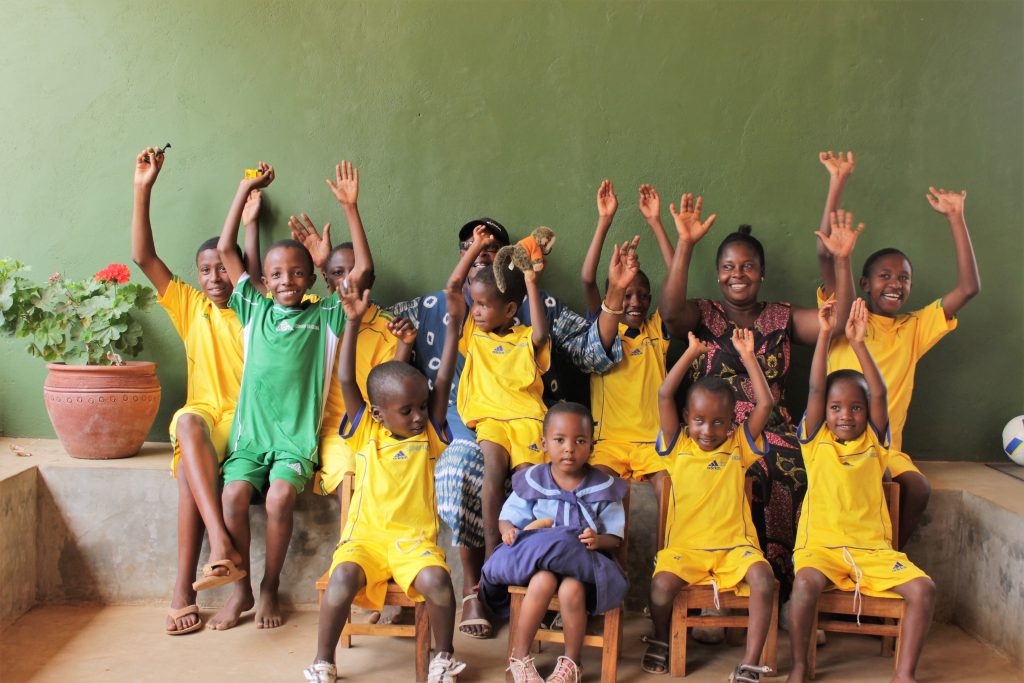BACKGROUND
Half of Tanzania’s 57 million inhabitants are under the age of 18. Life expectancy in the country is around 65 years according to the World Bank and 5.8 percent live with HIV/AIDS. That is one of the reasons why 3 million children, according to Unicef, are orphaned with no one to make sure that they are given with the right medical treatments, care, education and love that is necessary for a brighter future.
ECONEF Tanzania is an independent NGO (non-governmental organization) that runs a Children Center which lies at the foot of Mount Kilimanjaro, Africa’s highest mountain, in northern Tanzania. The organization is run by Caroline Nicholas and aims to improve the standard of living for orphans in the area. Each child has a different story, but most often, they have lost their parents to the HIV virus.
ECONEF Sweden is a foundation that was established to finance the construction of this new Children’s Center, as the orphanage was run in a prototype building the first four years. All members have travelled to Tanzania, share a common interest for humanitarian efforts, and wish to contribute to the improvement of women’s and children’s living situations in exploited nations.
With the help of economic aid from sponsors and private donators, ECONEF has the ability to offer security and everyday necessities for the orphans of the Children’s Center. The organization ensures that all children have somewhere to live, something to eat, and that they have access to education and hospitals. A couple of years ago, ECONEF acquired a piece of land connected to the original prototype orphanage with the goal to build this new Children Center.
A SUSTAINABLE CHILDREN’S CENTER
The first orphanage was located in Jua Kali, outside of Arusha in northern Tanzania. This was the first phase of the ECONEF project. The construction work for a prototype house started in summer 2013 and was finished in March 2014. In 2018, the inauguration of the new Children’s Center took place, marking a new phase in ECONEF’s history.
The aim of the Children’s Center is to increase ECONEF’s independence and reduce its reliance on private donations. To help achieve this goal the new buildings is sustainable and largely maintenance free. The center will produce its own electricity through the installation of solar panels. Integrated into the building’s structures are systems for rainwater collection and natural ventilation. Areas for livestock such as chickens, cows and vegetables are nearby to the buildings. The buildings have also been designed to minimize the need for outsourced building expertise and excessive transportation costs. To realize this, the use of local materials and traditional building techniques has been prioritized.
The Children Center’s localities are being carefully divided according to function. Closest to the road is the school, which is be accessible to children from other areas. The school and the children’s center share space for recreation, bathrooms, and a library. The public and the private areas are separated so that the children have places that they feel are their own and away from the school. One long-term goal is to become self-sufficient by biogas from the cows, to minimize the costs and the effect on the environment.
WATER
The African baobab tree has for a long time been a crucial resource for the people and animals of the savannah. While the trees grow to be about 20 meters in height, the trunk can be up to 50 meters in diameter and has a unique quality to retain water. The trunk can hold up to 120,000 liters of water and can in this way survive the desert’s dry periods. Much like the baobab trees, the school buildings collect rainwater from the roof’s spine. The collected water serves several functions by supplying water to showers, laundry facilities. Finally, all waste and excess water is directed to the growth plots below.



